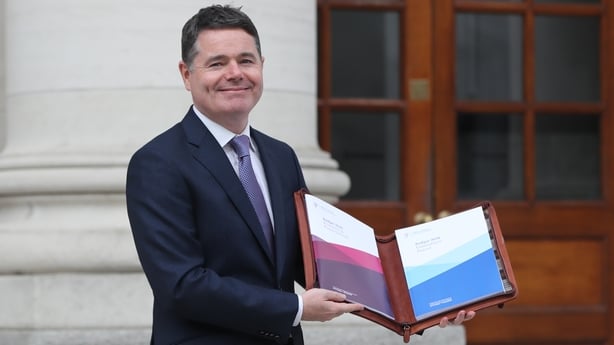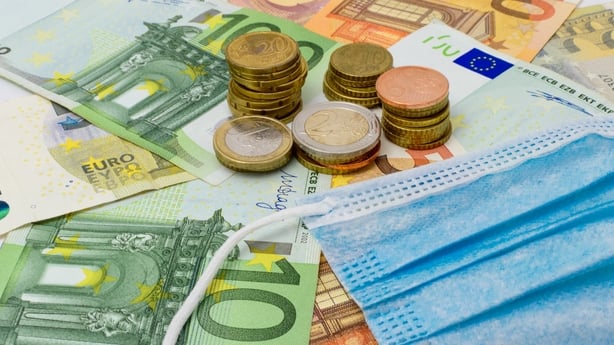Over the past year and a half, the government has spent more than seven times the average budget day «package» on tackling the fallout from the COVID-19 pandemic.
When it is finally stacked up, Covid’s direct expenditures are expected to reach €38 billion. Although current indications are that it may end up being a little lower. Either way, there is a lot of money.
The National Treasury Administration Agency has borrowed nearly €36 billion on behalf of Ireland since the start of the pandemic. Total government debt is expected to reach nearly 238 billion euros this year and exceed a quarter of a trillion euros by 2023.
It’s as if the Minister of Finance and National Debt jumped on an elevator in the spring of 2020 and climbed ten floors at a time to reach the rarefied (and hopefully less contagious) air of a skyscraper roof in October 2021.
So, when Paschal Donohue gets to his feet on Tuesday, he will present the traditional budget day package in a different world. And after a whirlwind of tax diplomacy, he might be forgiven if he swung his feet somewhat.
Budget parameters were set out in the Summer Economic Communiqué, and both the Minister of Finance and the Minister of Public Expenditure and Reform have confirmed on several occasions now that they intend to adhere to them.
That still means the next year’s voting expenditures of €88.2 billion and the daily budget package of €4.7 billion. New spending decisions per day will amount to about 1 billion euros while tax cuts worth 500 million euros are being put in place.
The Public Finance Board has described the budget accounts and subsequent budget plans as «within what is prudent» and potentially «risky».
There is little room for error on top of a skyscraper.
The good news is that the world below is starting to move a lot faster. The Ministry of Finance doubled its forecast for growth this year in terms of GDP at 15.6% (Another world again…) and 5.2% when measured by adjusted domestic demand.
Both the ESRI and the central bank are in line with their upgraded forecasts last week and predictions that unemployment will fall more sharply than previously thought.
Some evidence came to support this week with the unemployment rate in September, including those for pandemic unemployment payments – which fell to 10% from just over 12% in August. Numbers in the PUP program have more than halved from over 217,000 in September to just over 100,000 today.
Then late last night we got news in the white paper that tax revenue will be much stronger than the government calculated – about €3.8 billion stronger – helped in large part by a record corporate tax of €13.53 billion.
ESRI sees an improved outlook for the economy relieving some of the pressure on public finances. It certainly cuts the amount by as much as €7 billion that the government will need to borrow this year to balance the books.
The flip side to more economic activity is that it can generate inflation. Inflation can cause investors to want a greater return on their money, which can lead to higher borrowing rates. Not what an indebted country wants to hear, even with a very understanding central bank in Frankfurt.
There is a huge debate going on now as to whether the price hikes recorded across economies are evidence of inflation or whether we are experiencing a temporary outpouring of price pressure, primarily caused by higher energy prices and bottlenecks in the supply of some commodities as economies decline. from the shackles of closure.
Inflation is currently around 3% in Ireland, depending on how you measure it.
Earnings growth, according to the central bank, is expected to grow just over 5% this year. But this is not spread evenly across sectors.
All of this matters because promised increases in welfare payments and adjustments to tax ranges, will be rolled back into these key metrics. But since it reflects the average of vastly different realities out there, it’s unlikely that everyone will be happy.
Also, if the minister stuck with the tax cut amounts, there wouldn’t be much to go for.
Half a billion euros sounds like a lot of money, but calculations from the Irish Tax Institute show that the cost of increasing the standard rate range by 1,300 euros to mitigate increased tax obligations from a 3% increase in the average salary would cost the treasury 325 million euros.
Then there is the cost of raising the various USC price ranges.
And after all that, you might only find yourself somewhere around €5 a week better off.
Stronger growth, more taxes and many, many demands on the public treasury will make sticking to spending limits politically difficult.
But with high debt levels, not sticking to it could end up becoming more economically complex.

«Lector profesional. Jugador galardonado. Aficionado a los zombis. Adicto a las redes sociales. Experto en tocino. Erudito en Internet»


